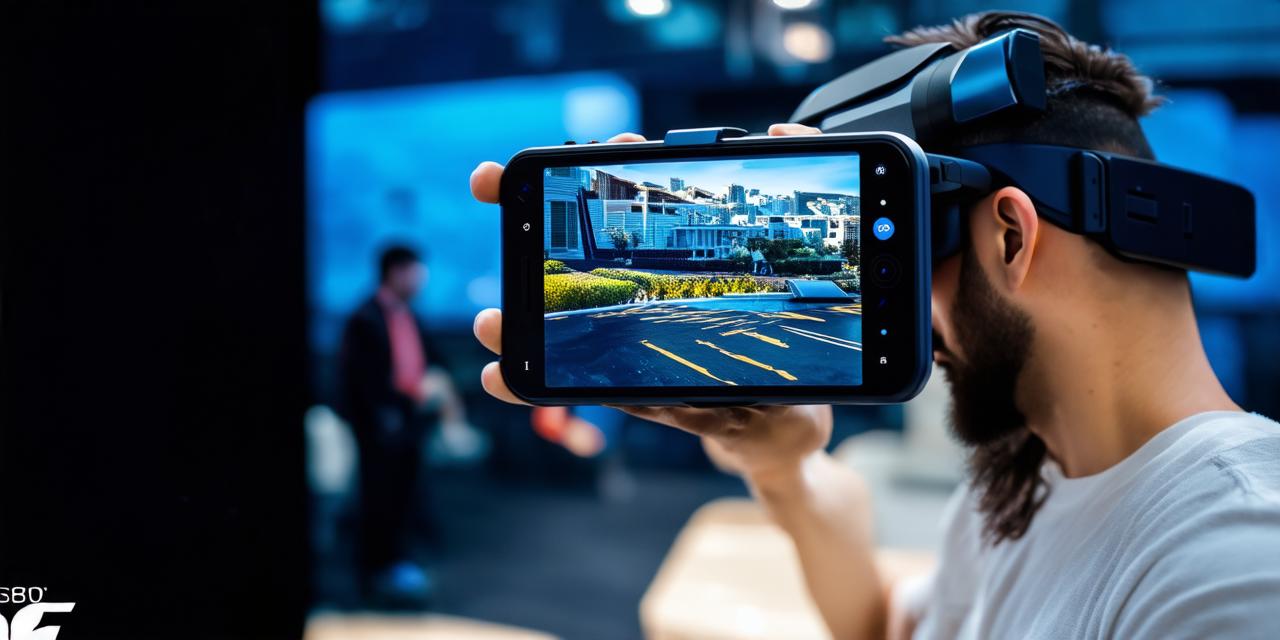Introduction
Augmented reality (AR) is a technology that overlays digital content onto the real world. It has become increasingly popular in recent years, with applications ranging from gaming and entertainment to education and healthcare.
In this article, we will explore different types of software for creating content in AR applications, including 3D modeling tools, animation software, and scripting languages. We will also discuss best practices for creating engaging and immersive experiences that take advantage of the unique capabilities of AR technology.
3D Modeling Tools
3D modeling tools are used to create three-dimensional digital models that can be integrated into AR applications. These tools allow designers to create realistic objects, characters, and environments that can be overlaid onto the real world. Some popular 3D modeling tools for AR development include:
- Blender: an open-source 3D creation suite that supports a wide range of file formats, including OBJ and FBX. It includes features such as sculpting, rigging, and animation that make it ideal for creating complex 3D models.
- Maya: a professional 3D modeling and animation software that is widely used in the entertainment industry. It includes advanced features such as motion capture and real-time rendering that make it ideal for creating high-quality AR experiences.
- SketchUp: a user-friendly 3D modeling tool that is designed for rapid prototyping and collaboration. It supports a wide range of file formats, including COLLADA and OBJ, and includes features such as animation and rendering that make it ideal for creating interactive AR content.
Animation Software
Animation software is used to create movement and interaction in 3D models for AR applications. These tools allow designers to create realistic animations that respond to user input and enhance the immersion of the experience. Some popular animation software for AR development include:
- Autodesk MotionBuilder: a professional motion capture and animation software that is used in the entertainment industry. It includes advanced features such as facial tracking and real-time rendering that make it ideal for creating high-quality AR animations.
- Final IK: an open-source animation software that is designed specifically for AR development. It includes features such as inverse kinematics and collision detection that make it easy to create complex animations for 3D models in the virtual world.
- Toon Boom Harmony: a professional 2D animation software that can also be used for creating AR content. It includes features such as rigging, motion capture, and scripting that make it ideal for creating engaging animations that respond to user input.
Scripting Languages
Scripting languages are used to program the behavior of 3D models and animations in AR applications. These tools allow designers to create interactive experiences that respond to user input and enhance the overall experience of the application. Some popular scripting languages for AR development include:
- Unity3D: a cross-platform game engine that supports AR development on a wide range of devices. It includes features such as scripting, physics, and networking that make it ideal for creating interactive 3D experiences in the virtual world.
- Vuforia: an AR development platform that includes a built-in scripting language called VuforiaScript. It allows designers to create complex interactions between 3D models and the real world, including object recognition and tracking.
- ARToolKit: an open-source AR development framework that includes support for scripting in Objective-C, Java, and C++. It allows designers to create custom interactions between 3D models and the real world, including gesture recognition and object tracking.
